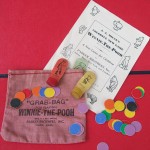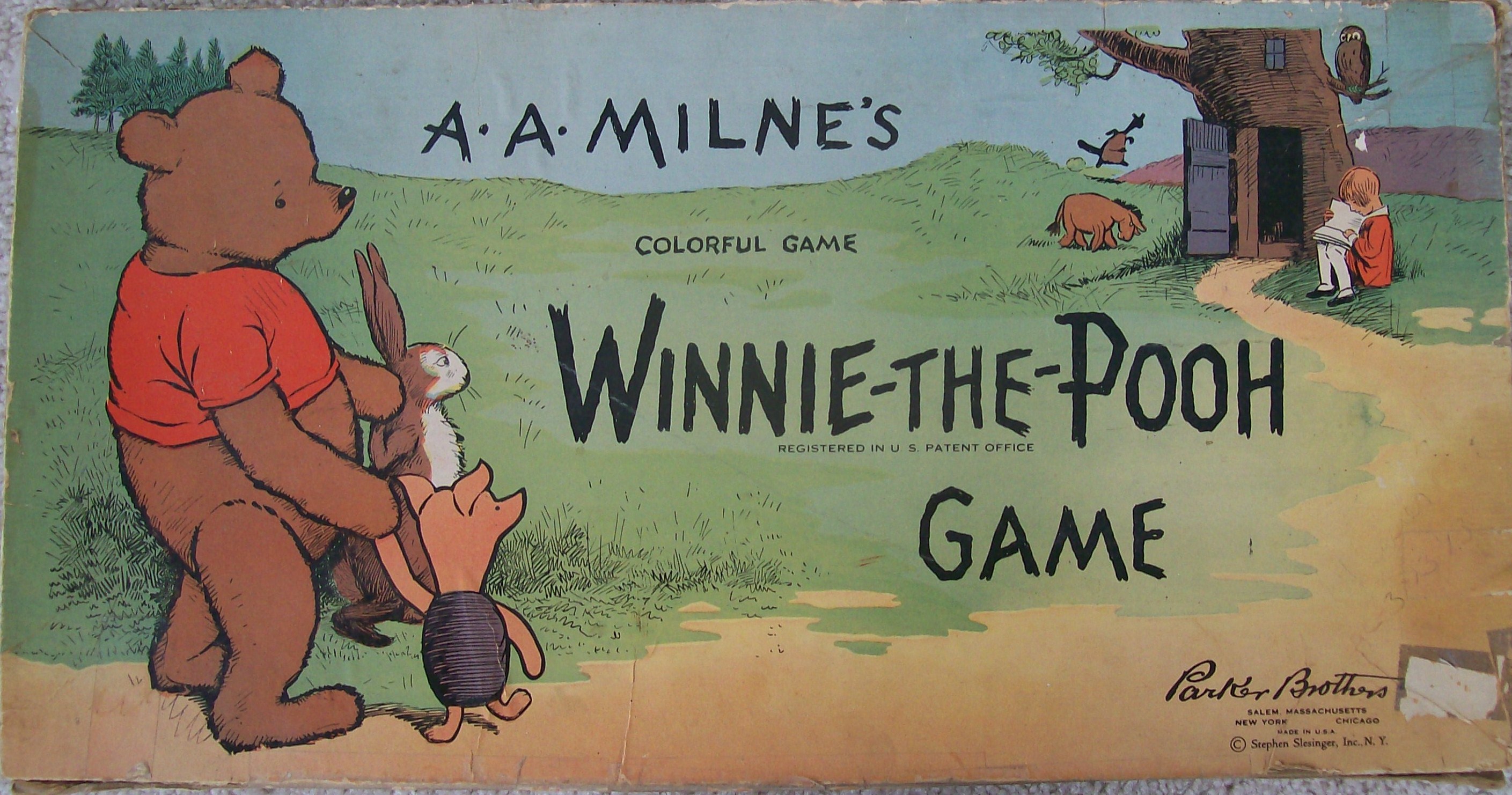The popular and beloved story of Winnie-the- Pooh gave rise to the vintage 1933 board game called Winnie-the-Pooh.

In 1926, A.A. Milne published the memorable story entitled Winnie-the-Pooh. The book contained the wonderful tales about the Hundred Acre Wood, Christopher Robin and his animal friends, including Winnie-the-Pooh. Although Winnie-the-Pooh’s first appearance is believed to be in Milne’s 1924 collection of poems of When We Were Very Young (as simply the Teddy Bear), it is from the expanded story(along with the 1928 sequel entitled The House at Pooh Corner), that Pooh’s popularity grew.
E.H. Shepard illustrated not only the teddy bear appearing in Milne’s poem, but also the later Milne narratives about Pooh. The image of the well known and adorable Pooh bear with red shirt developed from these initial drawings of Shepard’s. Shepard had depicted the Teddy Bear in Milne’s poem wearing a shirt, but it was not colored at that time. It was Stephen Slesinger, who later acquired rights to market Winnie-the-Pooh from Milne, who would actually color the shirt red.
Slesinger had introduced Pooh (with the red colored shirt on), to the people on his RCA record image in 1932. Soon after, with the creation of the 1933 Parker Brother’s board game of Winnie-the-Pooh, this red shirt is again widely seen on the cover. The game of Winnie-the-Pooh is a wonderful walk through the imaginary land.

Players choose one of the four characters: Winnie the Pooh, Christopher Robin, Piglet or Rabbit. The objective of the game is to be the first player to reach the space of the North Pole.

The game plays much like today’s familiar game of Candy Land published by Milton Bradley in 1949. Movement along the game board is determined by the drawing of colors. Colored discs are pulled from a ‘grab bag’ though, which is unlike the drawing of colored cards in Candy Land.
The rules for playing Winnie-the-Pooh state the method for advancing a player’s piece to the next color drawn “is entirely new and in a simple manner”. The game was obviously aimed towards young children. It can be speculated that Parker Brothers may have been anxious to invent a game which would rival the popular children’s Milton Bradley game of Uncle Wiggily of the time.
The game of Uncle Wiggily, first published in 1916, was also created from a beloved child’s story by Howard Garis and was a walk through its storybook land. The method for movement involved in this game required reading and counting and so wasn’t as easily understood as the movement found in Winnie-the-Pooh. Milton Bradley then of course adapted this ‘simple manner of play’ in Candy Land in 1949, as mentioned above.
Collecting childhood games, especially ones based off of childhood stories, shares the attraction and enjoyment children found in the imaginary lands. The board games offered children the opportunity to have the same lovable adventures found in the stories and collectors can do the same.

Jenny, Hi. I have two versions of the POOH game: one has printed instructions (booklet style) and the other has the instructions printed on the underside of the box-top. Is one version older than the other ? Thanks. Barry
Thanks I have only a game board and wanted to play it with my 2 1/2 year old granddaughter who loves the Disney version (I prefer Milne and Shepherds) I’ll use Disney PVC figures for the markers and either homemade colored cards or disks for the coins- you can get the game board for a s little as $7 on ebay and if you don’t need the box (there were two different versions) often the pieces and parts for not a lot of money- oddly when Disney released their version it is the same game just with disney style illos in stead of Shepherd one s. If you have an old board you can just buy a beat copy of the newer 1960’s Disney version and use its other parts. Games are for playing not just having on a shelf
I have this exact game,but do not have the instructions. Do you have an ideal of its value?
Thanks
Hi Terry,
In the American Games Collectors Guide (Malloy 2000) the 1933 game in good condition is listed at 200 dollars….
Prices vary widely….sometimes more, sometimes less…
Thanks for visiting…